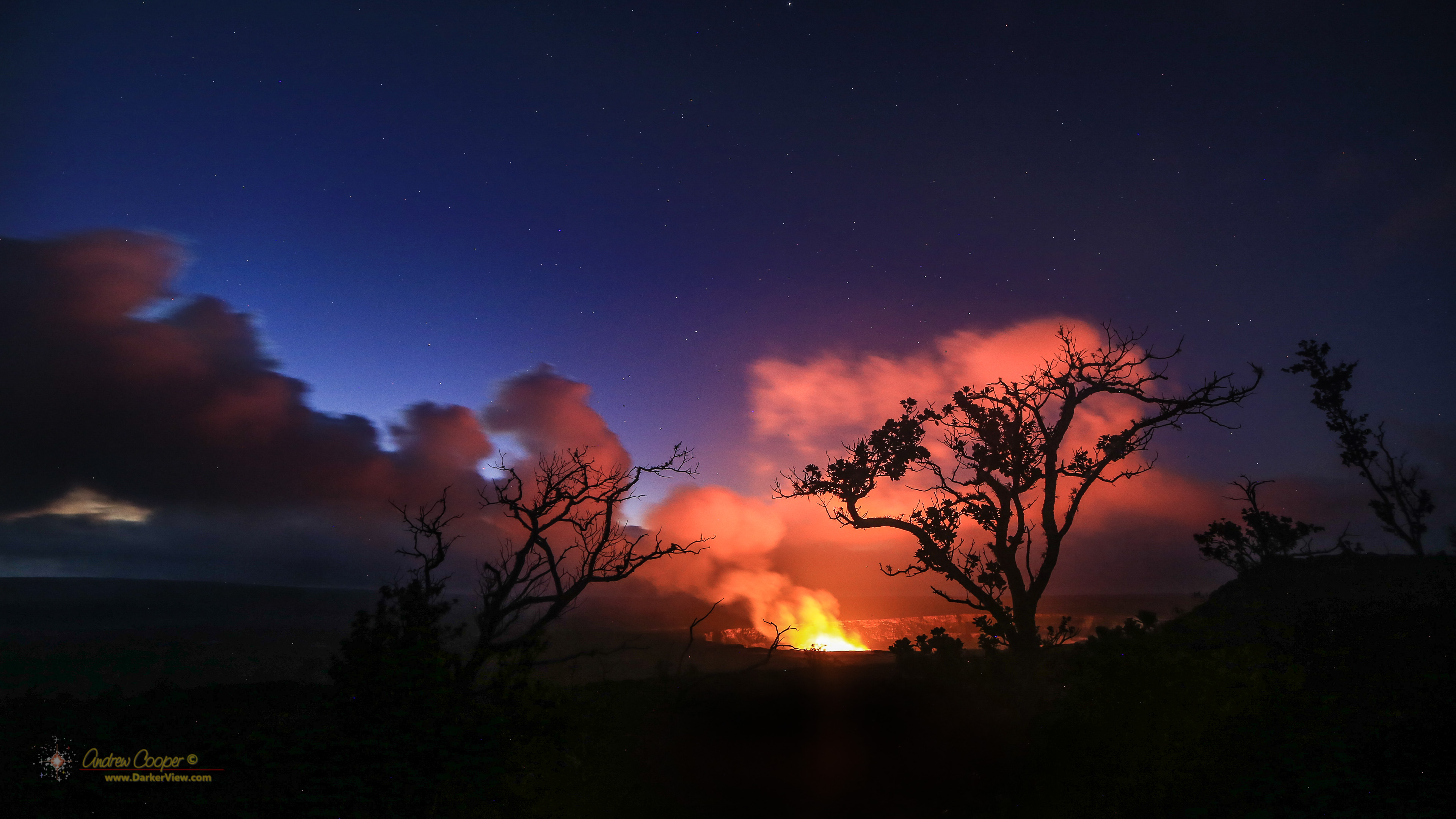A tale of two lava lakes, of a landscape altered in way so dramatic it is hard to comprehend.
We think of solid rock being the ultimate in permanency, something about the world that should never change, at least in the span of a few months. Geologic change takes thousands of years, not less than one, it just seems wrong when this rule is violated.
Places we once stood, or parked a car, a hiking trail across a plain of solid rock… All gone in a dramatic upheaval. A parking lot the lies upon a block of rock the size of a supertanker, sitting hundreds of feet below where I once parked the car. Change is the reality of an active volcano.

I have seen change on this scale once before when Mt. St. Helens removed a mountain top that stood upon the horizon of childhood memory. Here at Kilauea the change was a bit slower, but no less dramatic.
I look across that caldera and note the places that are the same, the places that are gone. I may understand what has happened and how, but still some parts of my mind insist that this just cannot be true… Solid rock should not disappear or crumble like a cookie.

The return of lava to the crater seems like a return of normalcy. There was lava here for years, there should be lava here. Perhaps the lava will cover over that yawning pit that should not be. Fill the yawning chasm that affronts my senses so.
Perhaps, if the crater continues to fill, flooded to the rim with new lava, a new caldera floor will form, the cycle complete. Perhaps it may be possible to once again walk across the floor of Kilauea Caldera.

